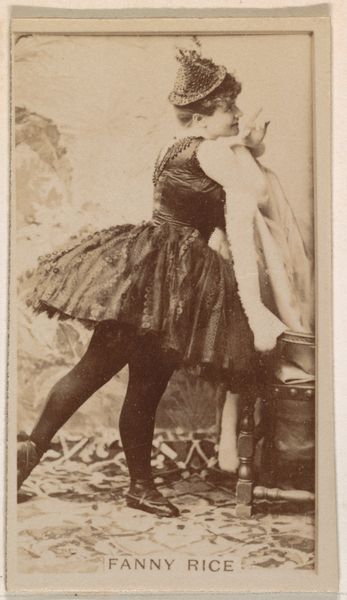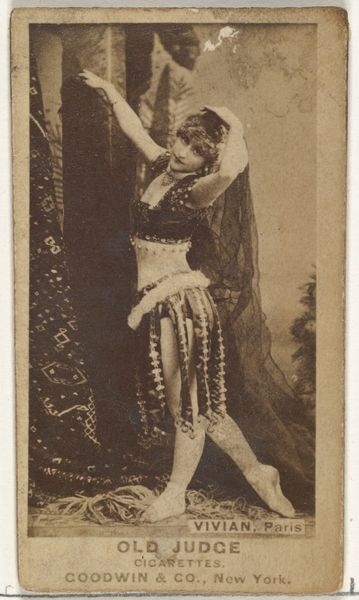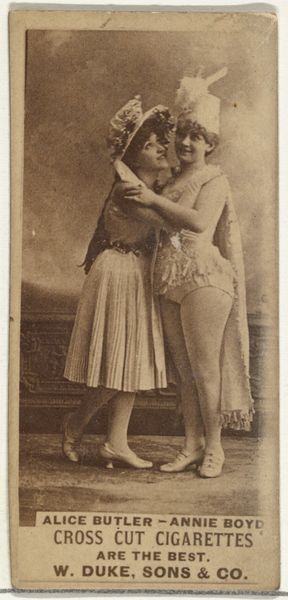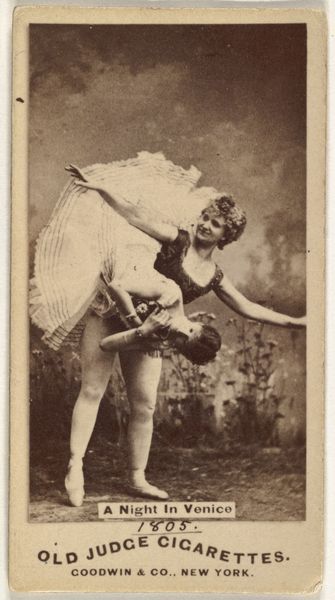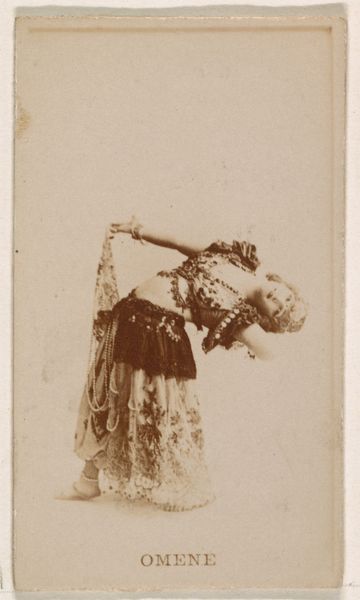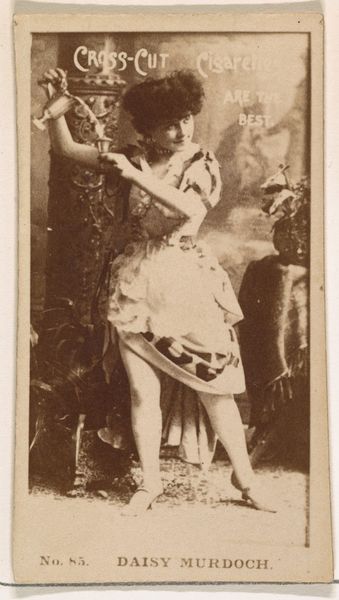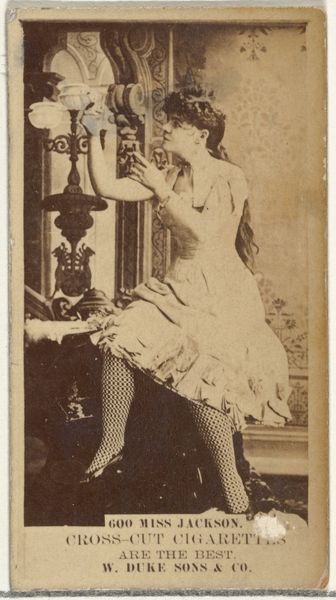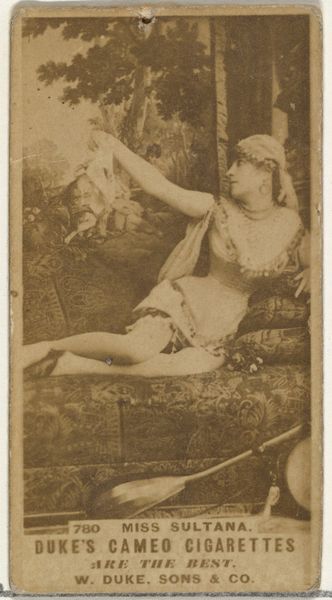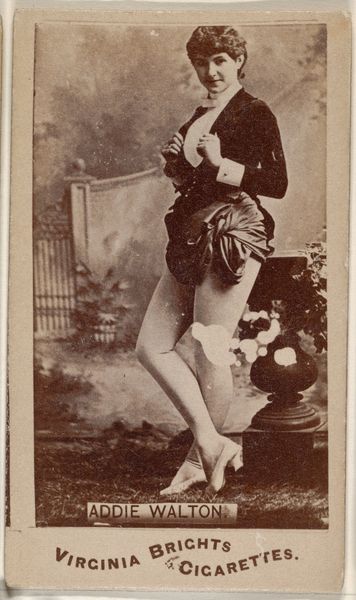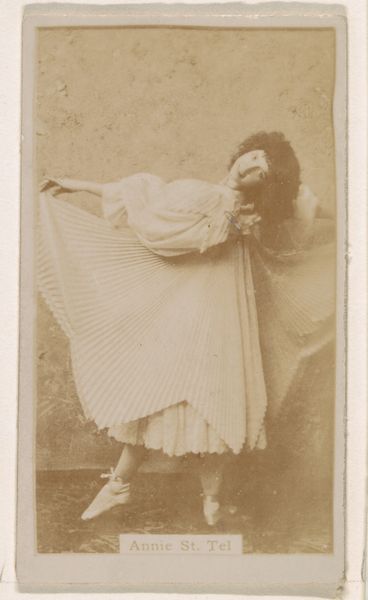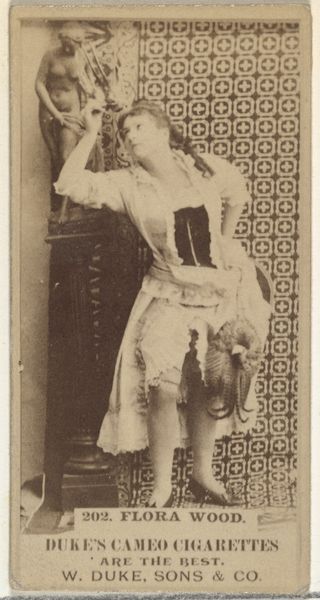
Yolande Wallace, from the Actresses series (N245) issued by Kinney Brothers to promote Sweet Caporal Cigarettes 1890
0:00
0:00
print, photography
#
portrait
# print
#
photography
#
19th century
Dimensions: Sheet: 2 1/2 × 1 7/16 in. (6.4 × 3.7 cm)
Copyright: Public Domain
Curator: This is an advertising trade card from around 1890 for Sweet Caporal Cigarettes, featuring Yolande Wallace, as part of Kinney Brothers' "Actresses" series. It is a photographic print, now housed at the Metropolitan Museum of Art. Editor: My first thought is one of almost performative exhaustion, or perhaps an elaborate pose for an intimate moment? There’s so much textural contrast between the gauze and the buttoned bodice. It reads like a deliberate display, crafted and carefully constructed. Curator: Exactly. These images served a very specific purpose: to sell tobacco using the allure and popularity of actresses like Yolande Wallace. They were not simply passive representations. Think about how these cards circulated; they were collected, traded, almost fetishized. Consider, too, Wallace herself, a woman navigating performance, visibility, and commerce in a rapidly changing media landscape. The very materiality of the image-- its status as a commodity distributed with tobacco-- speaks volumes. Editor: It's interesting to note how the focus isn't necessarily on craft in the traditional sense, but instead on production, distribution, and consumption. The very act of photography and its mass reproduction created a new relationship to representation. Wallace's image, turned into a reproducible product, takes on an entirely different dimension, almost a commodification of the performative self. You've got the raw materials, tobacco and the human face. How were cigarettes marketed as objects of desire with these prints? The question of labor is fascinating, especially female labor and celebrity at the time. Curator: Absolutely. Wallace becomes both subject and object. Her agency is undeniably tied to these structures of capitalism, spectatorship, and gender expectations, as it also reflects race. These promotional images helped fuel an image culture which impacts women, of various intersecting backgrounds and identities. It reflects an interplay between performance, visibility, and market demand in 19th century entertainment culture. Editor: It’s fascinating how this small print can reveal such broader historical contexts. When we think of art, our lens often gets clouded with our own modern interpretations, or rather projections of an artist's intent. It's refreshing to see the labor of cultural material shaping the artwork on this commercial object. Curator: And how an image, seemingly simple, can reflect really complex relationships. Editor: Precisely. Thank you for highlighting the broader context in which this object circulates!
Comments
No comments
Be the first to comment and join the conversation on the ultimate creative platform.
